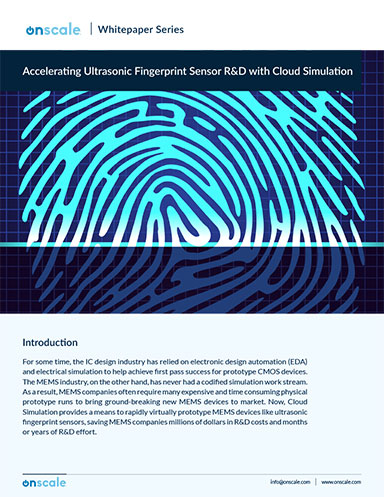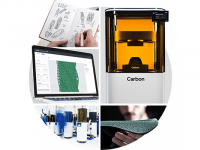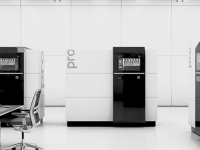Accelerating Ultrasonic Fingerprint Sensor R&D with Cloud Simulation
In this paper we describe the virtual prototyping and beamforming optimization of a 110 x 56 PMUT array fingerprint sensor first designed and prototyped by Horsley et al6 at the Berkeley Sensor & Actuator Center.

June 3, 2019
For some time, the IC design industry has relied on electronic design automation (EDA) and electrical simulation to help achieve first pass success for prototype CMOS devices.
The MEMS industry, on the other hand, has never had a codified simulation work stream. As a result, MEMS companies often require many expensive and time consuming physical prototype runs to bring ground-breaking new MEMS devices to market. Now, Cloud Simulation provides a means to rapidly virtually prototype MEMS devices like ultrasonic fingerprint sensors, saving MEMS companies millions of dollars in R&D costs and months or years of R&D effort.
For younger technologies such as MEMS, this process in still in its early stages. Two fundamental technology advancements must be seen through, in order to reach the efficiencies of EDA. Those advancements being 1) broad standardization of MEMS manufacturing processes, and 2) the emergence of massivelyscalable multiphysics simulation tools.
Standardization of manufacturing processes is largely driven by market forces, where new automotive, medical, and IoT applications are expected to propel the global MEMS market beyond $30B by 2024. But even with standard processes, designing MEMS is extremely challenging due to multiple, highly-coupled physics processes.
This whitepaper examines an ultrasonic sensing example, where static mechanical, thermal, piezoelectric, and acoustic wave physics all interact fundamentally to define the performance of the device.
Fill out the information below to download the resource.
Latest News


Related Topics




